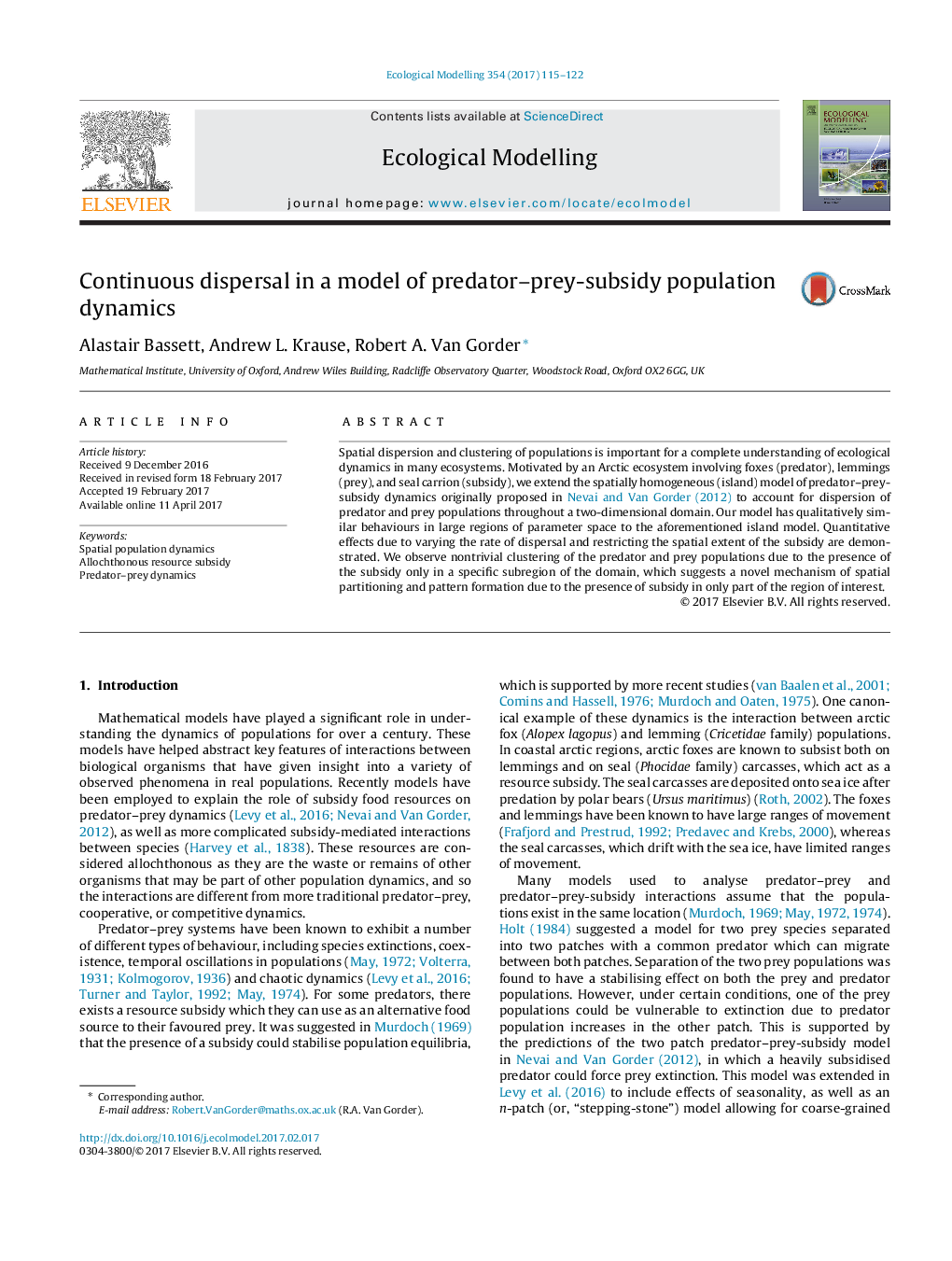| Article ID | Journal | Published Year | Pages | File Type |
|---|---|---|---|---|
| 5742191 | Ecological Modelling | 2017 | 8 Pages |
â¢We formulate a predator-prey-subsidy model to account for dispersion of predator and prey populations spatially.â¢Quantitative changes due to varying the rate of dispersal and spatial region with subsidy demonstrated.â¢Nontrivial clustering of the predator and prey populations observed.
Spatial dispersion and clustering of populations is important for a complete understanding of ecological dynamics in many ecosystems. Motivated by an Arctic ecosystem involving foxes (predator), lemmings (prey), and seal carrion (subsidy), we extend the spatially homogeneous (island) model of predator-prey-subsidy dynamics originally proposed in Nevai and Van Gorder (2012) to account for dispersion of predator and prey populations throughout a two-dimensional domain. Our model has qualitatively similar behaviours in large regions of parameter space to the aforementioned island model. Quantitative effects due to varying the rate of dispersal and restricting the spatial extent of the subsidy are demonstrated. We observe nontrivial clustering of the predator and prey populations due to the presence of the subsidy only in a specific subregion of the domain, which suggests a novel mechanism of spatial partitioning and pattern formation due to the presence of subsidy in only part of the region of interest.
